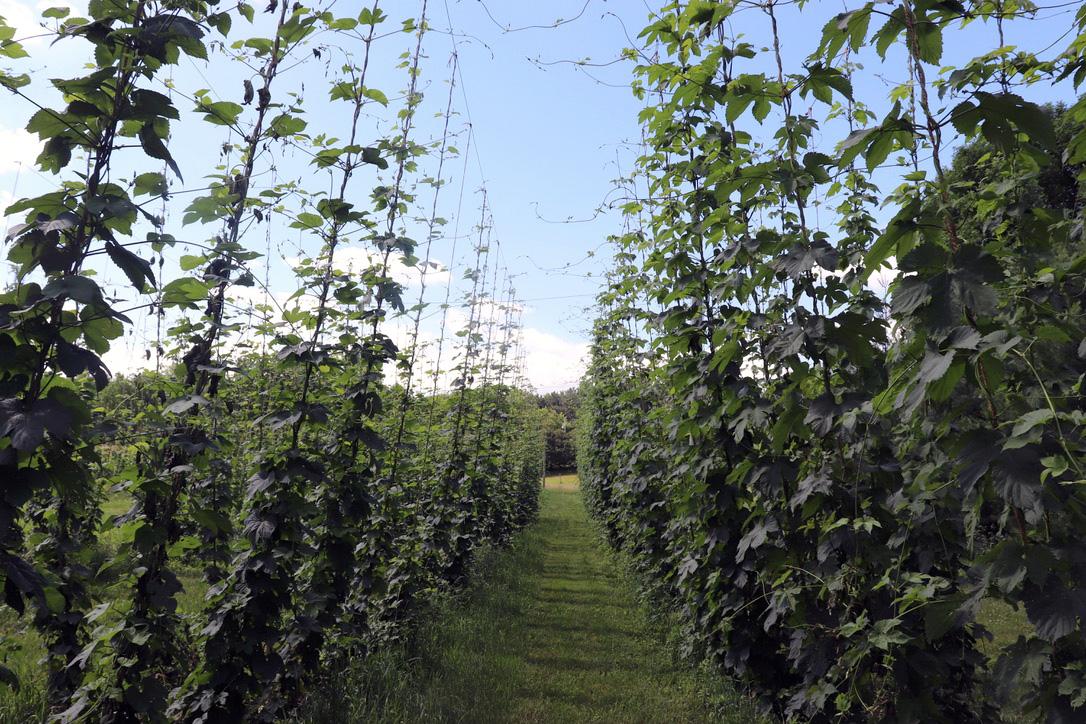In Minnesota, breweries are at the heart of many communities. According to the Brewers Association, there were over 271 breweries across the state in 2020. But as climate change continues to impact agriculture, local brewers and growers are starting to get concerned.
Extreme Weather
In Stillwater, hop farmer John Brach heads Stone Hill Farm, Minnesota’s oldest commercial hop yard. Brach feels it is important to educate people about the local agricultural aspects of the brewing industry, such as the importance of quality ingredients—including hops. Hops are a perennial plant whose flowers are used for bittering and flavoring beer. On his farm, he experiments with different varieties of hops and works directly with brewers, the USDA, the U of M, and other growers to share information and research. Extreme weather has taken a toll on Brach’s hops—as it has for other farmers’ crops. Golf ball-sized hail severely damaged crops early in the season.
“Weather extremes, erratic rainfall patterns, nasty wind, and hailstorms don't play well with specialty crops,” Brach commented on the impacts on his farm. Last year’s drought was no exception. It was the first year he’s had to consistently water his hop yard rather than rely on natural rainfall patterns.
Over the last ten years of hop growing, Brach has noticed changes in the climate through rainfall and damaging storms. Brach’s background as a former USDA’s Natural Resources Conservation Service engineer means he’s comfortable with the science. “I've seen the data, and you can’t argue with data.” According to the Department of Natural Resources, “heavy rains are now more common in Minnesota and more intense than any time on record.”
These impacts directly affect the local brewing industry as farms across the state face more crop failure. Nearby Pitchfork Brewery relies on John’s hops and may end up scrambling to source new ones to replace what the storm damaged. Even the more reliable climate of the Pacific Northwest is seeing more extreme weather and volatility in their hop growing operations.
Heating Up
Brach says Minnesota’s humidity is the most challenging obstacle to growing hops, as heat can create mildew and other diseases. According to the Star Tribune, climate scientists say Minnesota is set to see warmer and muggier weather and record heat waves, which is troubling news for the fledgling hop industry in the Midwest. These changes will alter the landscape of our current agriculture system, forcing farmers to come up with new methods and practices to keep their crops alive and thriving.
Climate Action
Mighty Axe Hops recently ran Minnesota’s largest hop operation, but climate obstacles became unbearable, forcing them to close. After a catastrophic storm in 2019 that devastated their 120-acre farm in Foley, there was no recovery amid the start of the global pandemic and the lack of available insurance for specialty crops, something many advocates hope to address in the 2023 US Farm Bill. For specialty crop growers like Brach, one severe storm could set the farm back, without a safety net.
Farmers face more obstacles yearly as Minnesota's climate changes and extreme weather threaten crops. An industry which relies on agriculture products to continue to build its economic output feels this acutely. Healthy soil, clean water, and effective policy will help to alleviate the burden many farmers will experience in the face of such change.
-Olivia Rivera and Keely Cervantes


